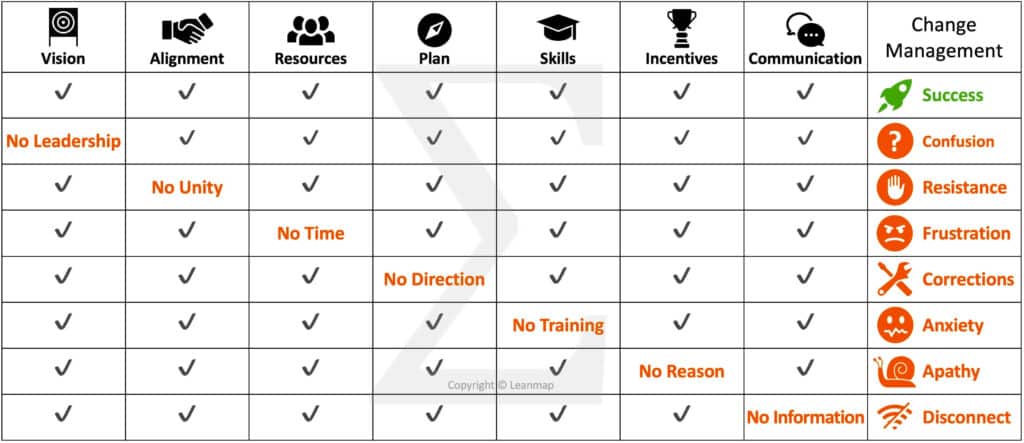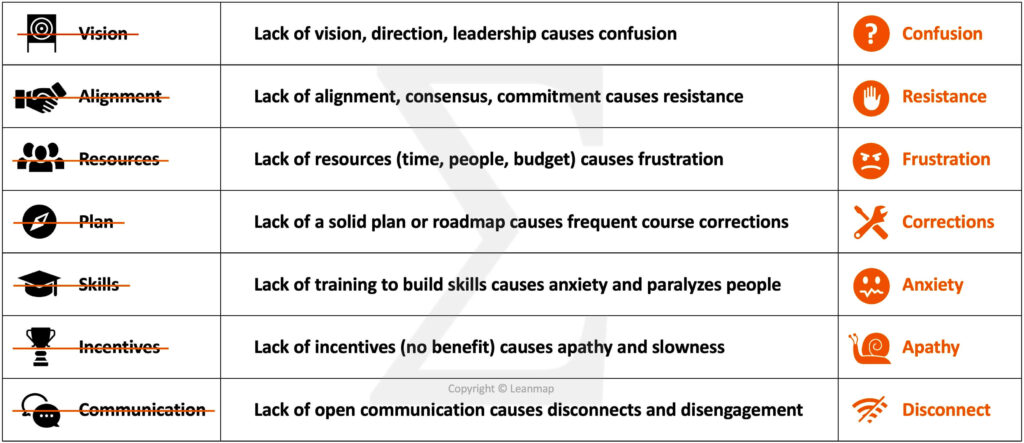Strengthening an organization with external skills and expertise requires a clear definition of organizational setup, type of intervention, roles and responsibilities.
When the current improvement approach is not working, methods are outdated or inappropriate to meet objectives, skills and expertise are lacking, or the path forward is unclear, then hiring external support is often the right answer. For an effective collaboration between the internal team and external expert requires total clarity – boundaries included – on how to best intervene and interact to create the desired impact. When hiring a consultant, make sure you define the Consultant Role – including responsibility, competency, authority – to ensure a clear organizational setup and successful engagement overall.
Defining the Role of a Consultant to Add Knowledge, Expertise, Leadership to Your Organization
In the basic setup, the consultant provides critical knowledge as a Team Member, while the client controls the process and outcome. In the role of a consultant as Sparring Partner, the external expertise helps the internal leader to make better decisions, while control and accountability is shared between both parties. And in the Interim Manager role of a consultant, the external party provides leadership, controls the entire process and is fully accountable for the outcome. The definition of authority, responsibility, competency is therefore a prerequisite for any successful consulting engagement to help your team.
Team Member | Knowledge

Role: The external expert complements the internal team, provides the critical knowledge to analyze the problem and develop the solution.
Principle: When the client steers the program, the new knowledge will modify behaviors and deliver better results.
Risk: By offering information about trend, impact, and consequences of not acting, people might try new ways – or not.
Application: Bottom-up improvement initiatives, where success does not depend on a directive, new capabilities, or an external process.
Examples: Analyzing problems, identifying opportunities, developing improvement projects.
Sparring Partner | Expertise

Role: The external expert provides subject-matter expertise, assisting the internal leader to execute the program, while coaching the team.
Principle: When sharing control between client and consultant, the jointly-developed solution will lead to better results.
Risk: By co-leading the transition, success greatly depends on a clear direction, strong buy-in, and frequent alignment between both parties.
Application: Central improvement program, led by senior management, and closely supported by the external expert.
Examples: Evolving business model, deploying strategy, defining a new organizational model.
Interim Manager | Leadership

Role: The external expert leads the internal team ad interim, until targets are achieved and systems are in place to sustain them.
Principle: When the external leader takes control, people will adapt and modify their behavior by following a strong direction.
Risk: By providing a directive, people may comply under pressure, while their fundamental believes remain unchanged.
Application: Crisis situation, when the deadline is near, or when rapid change or strict performance management is required.
Examples: Turnaround to bring performance on target and mission-critical projects on track.
Defining the Consulting Engagement: The 5 Ways to Influence a Client Organization, Benefits, Risks
Selecting the right type of assistance depends on current conditions, capabilities, timeline, limitations, and desired impact. There are five levels of consulting intervention, from “light touch” to “strong lead”, each with a clearly-defined purpose and process, acting as coach, advisor, stimulator, navigator, or director.
1. Coach
Involvement: 10% for monthly planning sessions, 1-3 workdays per month.
Method: The expert actively listens and shows understanding for the problem, asks guiding questions and provides a view.
Benefit: It gives people all the time and space they need to decide whatever is right for them.
Risk: Freedom of choice can induce stress to find the right path. People may find it more gratifying to select from a smaller menu of selected options with a clear path plotted on how to become more successful.
Application: When a leader wants a sparring partner to listen and provide feedback, validate options before making a decision.
2. Advisor
Involvement: 20% for bi-weekly consulting reviews, 3-5 workdays per month.
Method: The expert performs the analysis, helps the team identifying root causes, and provides advice to managers making the decision.
Benefit: In this education intervention, the role of expert is to help people understand what is happening, what is coming, and how this change might impact them. It allows people to accept or reject the given advice.
Risk: Engaging into endless discussions without any real action.
Application: When people need specialist knowledge to understand and commit, such as for a pre-merger analysis or business process redesign.
3. Stimulator
Involvement: 30% for weekly reviews and coaching, 5-10 workdays per month.
Method: The expert helps people to understand and encourages them to try new things, while getting key people involved so others will follow.
Benefit: The stimulator creates change through presence. It leaves a large degree of control with the individual but there is an indirect push by management toward a specific outcome.
Risk: People might get irritated from the indirect approach and semi-soft actions, provoking a backlash.
Application: When internal action is not sufficient or not appropriate; driving results through persistent follow-up.
4. Navigator
Involvement: 50% for part-time management support, 10-15 workdays per month.
Method: Authority and most decisions are delegated to the consultant who retains significant authority over the direction of the project.
Benefit: Taking the helm includes others in the change process, helping quick learners develop the skills towards independence.
Risk: Uncertainties from a shared directive make it less clear on who is in charge; managers can become resentful because of limited control. Requires roles and responsibilities to be clarified so people find their places in the transition.
Application: When changing the way of working (WOW), implementing a major project, program, or system.
5. Director
Involvement: 100% for full-time interim management, 15-25 workdays per month.
Method: The consultant or interim manager owns the process and has full control over resources, while the client is fully dependent on the external leader.
Benefit: Speed, simplicity, and autonomy for the leader to get things done.
Risk: Can scare people and make them feel powerless. Successful when the consultant takes full control, while coaching individuals, helping them grow towards independence.
Application: When internal capability or bandwidth are insufficient to achieve desired results, such as in turnaround situations.
The Role of a Consultant Evolves Over Time
The delivery of sustainable value through systematic change involves introducing and embedding multiple policies and practices across multiple functions and entities. The role of the external consultant and the type of control therefore changes over time. Here are two examples:
- An engagement started with a benchmarking exercise to identify opportunities and create an improvement proposal (Advisor). The client then decided to hire additional support to lead the implementation (Director), while providing training sessions (Coach) to transfer skills.
- An operational crisis situation required an experienced interim manager (Director) to lead the turnaround, followed by rounds of education interventions for stakeholders to build required skills and capabilities (Coach), and a series of nudges to initiate action (Stimulator).
Conclusion: to create sustainable value, it is important to develop a cohesive and coherent change strategy embedded in a detailed implementation plan, and to enlist the right level of external support to implement this master plan, rather than rapid-fire actions that create more chaos than benefit.
The 7 Factors for a Successful Consulting Engagement
To deliver lasting change, a program must be properly designed, resourced, and executed. We help you putting all seven key success factors in place: (1) a compelling Vision to clarify the future state; (2) solid Alignment between stakeholders to ensure everyone is on board and on the same page; (3) sufficient Resources allocated to execute the improvement; (4) a detailed Plan so everyone is clear on what to do; (5) sufficient Skills and capabilities to move forward and meet requirements; (6) Incentives that motivates people to act; and (7) an open Communication to get people involved and behind the mission.

The 7 Causes for a Failed Consulting Engagement
Programs and projects fail for one or several of these seven reasons: (1) lack of Vision or the absence of leadership causes confusion because the future state is unclear, (2) lack of Alignment causes resistance when stakeholders do not see the same problem or solution, (3) lack of Resources causes frustration when there is not enough time, not enough people, or not enough budget allocated; (4) lack of a robust Plan causes false starts and frequent course corrections to get back on track; (5) lack of Skills and capabilities causes inaction, mistakes, and fear of failure; (6) lack of Incentives causes apathy and slowness because there is no reason to act; and (7) lack of Communication keeps people uninformed, causes disconnects and disengagement.

The 5 Steps to Reduce the Risk of Consulting Failure
- Client defines the vision or objective and allocates required resources to implement it.
- Both parties jointly develop the roadmap and ensure all key stakeholders are on board.
- Consultant provides the know-how to co-develop solutions together with the client team.
- Client communicates the program and its goals, and provides incentives for people to act.
- Both parties relentlessly follow through on commitments, remove barriers to ensure success.
Why Clients Hire Leanmap Consultants:
- Flexible staffing, from part time to full time
- Effective delivery of programs and projects
- Scale up when more support is required
- Ramp down as improvements take hold
- Result-focus ensures measurable impact
- 96% repeat clients from high-quality work
We support your team with advice, coaching, and hands-on implementation assistance until goals are achieved.

Lean Consulting and Lean Management for Top Results
We help manufacturers and service providers with rapid performance boosts, resulting in significantly-lower cost and a stronger market position long term.

Leanmap Consulting for Operations Transformation
We offer expertise, coaching, and hands-on realization support for manufacturers, technology firms, and service providers to set operational benchmarks with Lean.

Lean Consultant and Lean Manager on Demand
Helping leaders close performance gaps and advance capabilities to reach operational benchmarks, so they never have to fear the competition again.

Lean Process for Systematic Performance Improvement
Building a “Lean Machine” to consistently deliver outstanding results that delight customers, are envied by the competition, and blow investors away.

